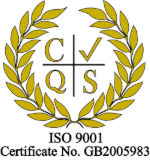Running a Purchase Order System
You will be surprised how many business owners and company directors do not have control over their purchases. A lot of companies we visited didn’t even know how much their overheads were each month or what their ‘break even’ figure was; some didn’t even know what a ‘break even’ figure was!!
As astounding as this may sound, it is true and the purchase ledger clerk, accounts person or the financial controller was accepting every invoice as right.
If at all possible you should introduce a purchase order system into your business and get control of your overheads. As with most internal procedures they don’t have to be rhyme and verse and complex beyond belief they can be as simple as follows: –
- Identify a need for a business expense
- Source the company to supply the business expense
- Contact the company and ask for their most competitive price
- Complete a purchase order with the above information
- Get the purchase order authorised
- Order the expense quoting the number / reference
- Accept delivery of the goods or refuse if not as ordered or damaged
- Check the invoice computes with the purchase order and attach both documents
- Pay the invoice when due. Not all systems will work exactly like this especially if it is a service (bookkeeping!) that the business is buying in but in most cases costs can be confirmed. Some suppliers may also ask for payment upfront but hopefully the above has given you an insight into how simple a purchase order system can be. Good accounting software programs like Sage offer purchase order modules to make life even simpler for you.If you need bookkeeping assistance or advice, Sage training or would like help developing your own systems please contact us on 020 8087 1341, email info@cainandbeer.co.uk or visit our website.


